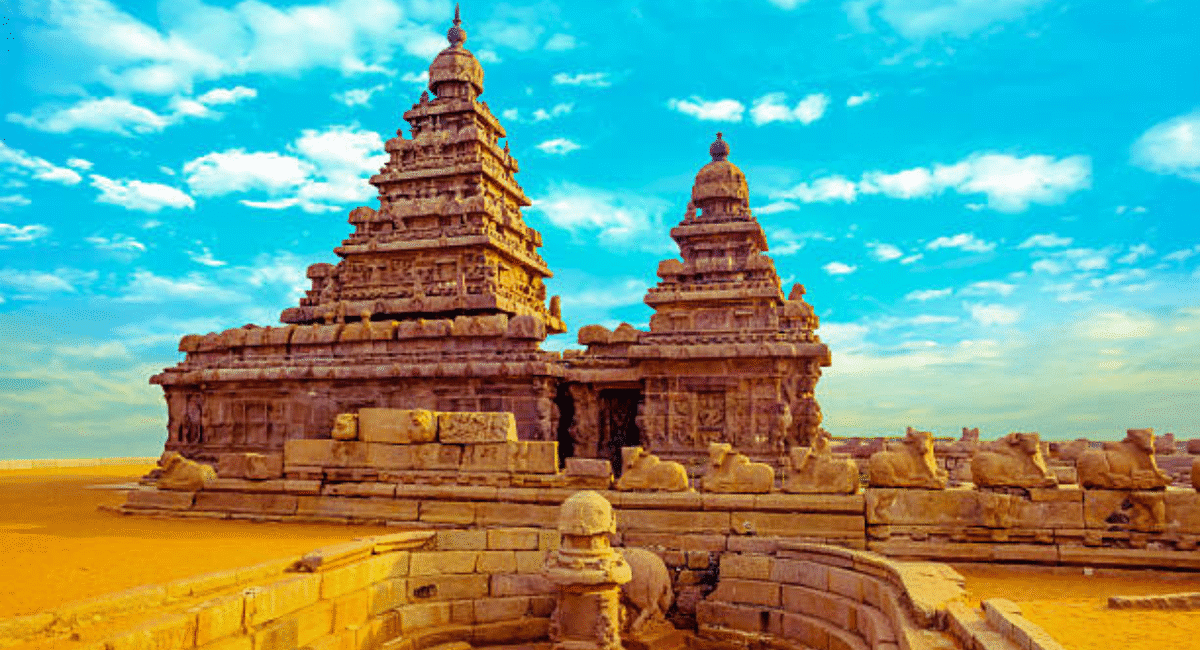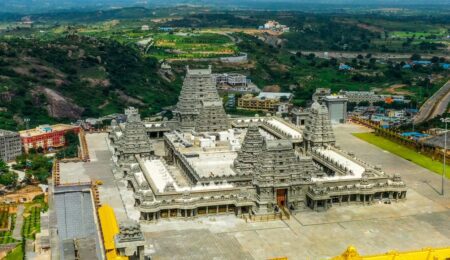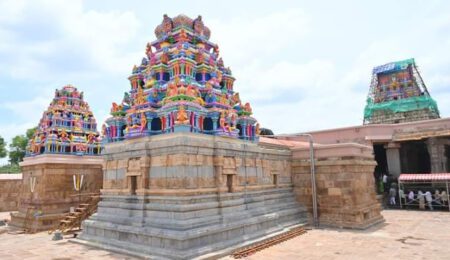The Group of Monuments at Mahabalipuram
Introduction: Where Myth Meets Granite
The Group of Monuments at Mahabalipuram, also known as Mamallapuram, is not merely a destination it is a living museum of sacred geometry, mythological storytelling, and architectural innovation. Located on the Coromandel Coast of Tamil Nadu, this ancient town is home to one of India’s most iconic UNESCO World Heritage Sites: the Group of Monuments at Mahabalipuram. These monuments, carved primarily during the reign of the Pallava dynasty in the 7th and 8th centuries CE, represent a confluence of Shaivism, Vaishnavism, and Dravidian architectural experimentation.
From monolithic rathas to cave sanctuaries, from open-air bas-reliefs to structural temples, Mahabalipuram is a testament to the Pallavas’ artistic vision and spiritual devotion. This article explores the site in exhaustive detail its history, architecture, symbolism, and contemporary relevance—while offering SEO-rich insights for digital content strategy.
You are reading The Group of Monuments at Mahabalipuram
Historical Background: The Pallava Legacy
Origins and Patronage
The Pallavas were a powerful South Indian dynasty that ruled parts of Tamil Nadu and Andhra Pradesh from the 3rd to 9th centuries CE. Under the reign of Narasimhavarman I (Mamalla), Mahabalipuram emerged as a flourishing center of art, religion, and maritime trade.
- Narasimhavarman I (630–668 CE): Commissioned many of the monuments, earning the epithet “Mamalla,” meaning “great wrestler.”
- Narasimhavarman II (Rajasimha): Credited with building the Shore Temple, one of the earliest structural temples in South India.
Maritime Significance
Mahabalipuram was a thriving port city, connecting India with Southeast Asia. Archaeological evidence and inscriptions suggest trade links with Cambodia, Java, and Sri Lanka. The monuments may have served as spiritual beacons for seafarers and merchants.
Architectural Typology: A Diverse Ensemble
The Group of Monuments at Mahabalipuram comprises over 40 structures, categorized into four primary types:
1. Rathas (Monolithic Temples)
The Pancha Rathas, or Five Rathas, are chariot-shaped temples carved from single granite blocks. Each ratha is named after a Pandava from the Mahabharata, though the association is symbolic rather than historical.
| Ratha Name | Features | Deity Association |
|---|---|---|
| Dharmaraja Ratha | Tallest, with a pyramidal tower | Shiva |
| Bhima Ratha | Oblong shape, barrel-vaulted roof | Vishnu |
| Arjuna Ratha | Smaller, with intricate carvings | Shiva |
| Draupadi Ratha | Hut-like, dedicated to Durga | Durga |
| Nakula-Sahadeva | Twin rathas, horse motifs | Indra |
These rathas are prototypes of later South Indian temples, showcasing experimentation in form and iconography.
2. Mandapas (Rock-Cut Cave Sanctuaries)
Mandapas are cave temples carved into granite outcrops, featuring pillared halls and sculptural panels.
- Mahishasuramardini Cave: Depicts Durga slaying the buffalo demon, symbolizing divine victory over evil.
- Varaha Cave: Shows Vishnu rescuing Bhudevi, the Earth goddess, from cosmic waters.
- Krishna Mandapa: Illustrates Krishna lifting Govardhana Hill to protect villagers from Indra’s wrath.
These caves blend narrative art with devotional architecture, making them spiritual classrooms for pilgrims and scholars.
3. Shore Temple
The Shore Temple, built around 700–728 CE, is a structural temple (not rock-cut) and one of the earliest examples of stone-built temples in South India.
- Orientation: Faces the Bay of Bengal, symbolizing the cosmic ocean.
- Deities: Twin shrines dedicated to Shiva and Vishnu.
- Style: Pyramidal vimanas, ornate carvings, and a compound wall with Nandi sculptures.
The temple’s coastal location made it a landmark for sailors and a symbol of Pallava maritime prowess.
4. Rock Reliefs
The most famous is the Descent of the Ganges, also interpreted as Arjuna’s Penance.
- Dimensions: ~30 meters long and 9 meters high.
- Imagery: Celestial beings, sages, animals, and river deities.
- Symbolism: Represents either Arjuna’s penance to obtain divine weapons or Bhagiratha’s austerities to bring the Ganges to Earth.
This open-air bas-relief is one of the largest in the world and a masterpiece of narrative sculpture.
You are reading The Group of Monuments at Mahabalipuram
Religious Symbolism and Mythological Themes
Mahabalipuram’s monuments are deeply rooted in Hindu cosmology, epic narratives, and spiritual symbolism.
Shaivism and Vaishnavism
- Shaivite Elements: Lingas, Nandi sculptures, depictions of Shiva in various forms (e.g., Gangadhara, Somaskanda).
- Vaishnavite Elements: Vishnu as Varaha, Krishna lifting Govardhana, reclining Vishnu panels.
The coexistence of both traditions reflects the Pallavas’ inclusive religious vision.
Epic and Puranic Narratives
- Mahabharata: Pancha Rathas, Arjuna’s Penance.
- Ramayana: Scenes of Rama’s forest life.
- Puranas: Varaha rescuing Earth, Durga slaying Mahishasura.
These stories are not merely decorative—they serve as moral and spiritual lessons for devotees.
Notable Monuments in Detail
Pancha Rathas
Each ratha is unique in design, showcasing architectural experimentation. The Dharmaraja Ratha’s tiered tower prefigures later Dravidian vimanas. The Draupadi Ratha’s simplicity contrasts with the Bhima Ratha’s grandeur.
Shore Temple
The temple’s coastal erosion and salt-laden winds have weathered its sculptures, yet its silhouette remains iconic. Recent excavations suggest submerged temples nearby, hinting at a larger complex lost to the sea.
Arjuna’s Penance / Descent of the Ganges
This relief is a visual symphony of myth, nature, and devotion. Elephants, monkeys, sages, and celestial beings interact in a dynamic tableau. A cleft in the rock symbolizes the descent of the Ganges or Arjuna’s austerities.
Krishna’s Butter Ball
A massive granite boulder precariously balanced on a slope, defying gravity. Local legends say Krishna dropped it while stealing butter. It’s a natural wonder and a tourist favorite.
Preservation and Conservation
Archaeological Survey of India (ASI)
The ASI manages the site, ensuring structural stability and visitor regulation. Conservation efforts include:
- Sandbag barriers: To prevent sea erosion near the Shore Temple.
- Digital documentation: 3D mapping and photogrammetry.
- Visitor education: Signage, guided tours, and heritage walks.
Climate Challenges
Rising sea levels, salt corrosion, and tourist footfall pose threats. UNESCO and ASI collaborate on sustainable tourism models.
UNESCO World Heritage sites in India
Global Influence and Cultural Diplomacy
Southeast Asian Connections
Mahabalipuram’s architectural style influenced temple construction in:
- Cambodia: Pre-Angkorian temples.
- Java: Borobudur and Prambanan.
- Vietnam and Thailand: Hindu-Buddhist syncretic shrines.
Modern Diplomacy
In 2019, Mahabalipuram hosted the India-China informal summit, showcasing India’s cultural heritage. The monuments served as a backdrop for diplomatic dialogue, reinforcing their global stature.
Educational and Devotional Value
For Scholars
- Art History: Study of Pallava iconography and temple evolution.
- Epigraphy: Inscriptions in Grantha and Tamil scripts.
- Comparative Religion: Shaivism-Vaishnavism synthesis.
For Devotees
- Pilgrimage: Spiritual immersion in sacred narratives.
- Rituals: Annual festivals, pujas, and temple ceremonies.
- Meditation: Quiet spaces for reflection and prayer.




Leave a Comment